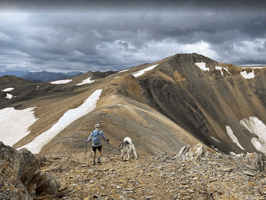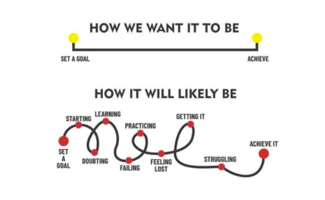You’ve probably heard that training too much, too soon is one of the biggest risk factors for...
How to Use a Race as a Training Run

This weekend I'll be driving out to Mueller State Park in Divide, CO to take part in The Great Divide Ultra Night 50K. The race starts at 8pm, and I'll be joining the 100-milers and 100-K runners as they begin their journey through the night. This race is not my "A" goal, rather it's being used as a strategic training run for my upcoming 100-miler, Silverheels 100. I chose the night option so I could practice my lighting and layering strategies and because I feel a lot safer running through the night with fellow ultra runners compared to running solo on my home trails. Below I will answer some common questions about how and why to use a race as a training run in the weeks and months leading up to your "A" goal.
1. Is it necessary to use races as training runs? No, it's not necessary, but it could be helpful! Attaining your big goals is never about one long run or the longest long run. It's about consistently building volume over months and years. Using a race as a training run essentially provides an opportunity for an extra long run with support (aid stations) along the way. It gives you the opportunity to test out your gear and nutrition strategy. It can also just be for pure enjoyment. I love participating in races, so using shorter distances as training runs for my bigger goals brings me a lot of joy!
2. What race distance is best to use as a training run? It depends! It depends on where you are at in your training cycle, and it depends on how quickly your body is able to recover from various race distances. When you use a race as a training run, you will not do a full taper (more on that later), and you should not need to spend much time recovering. Ideally, you'd ease right back into training the week after your race. If a certain race distance disrupts your training and causes you to take time off or spend weeks recovering, then that distance is too long to use as a training run. Many people seem to think that longer is better but remember it's not about the longest long run! It's about consistently building volume over months and years.
3. Should you taper for your training race? Yes, but only slightly! Consider it a mini taper. You will want to reduce your training volume the week of the race such that the overall distance and/or time on feet is in line with your normal training volume. For example, say my training plan calls for a 50-mile training week. I know my race will be 31 miles (50K), so I will take the remaining 19 miles and distribute them throughout the week. It might look something like this: Monday 5 miles, Tuesday 5 miles, Wednesday 4 miles, Thursday rest, Friday 3 miles (easy shakeout), Saturday 31 miles (50K race), Sunday recovery walk/run for 2 miles.
4. How far out from your "A" goal should you run a training race? Again, like most things, it depends! If you want to use a training run during a peak training week, aim for 3-5 weeks prior to your "A" goal. You can also integrate training races throughout your training cycle. When choosing a race during your peak training weeks, look for races that are on similar terrain or have a similar elevation profile as your "A" goal. Further out from your "A" goal, this specificity doesn't matter as much. Choose races that look fun and would enhance your enjoyment of training!
5. How fast should you run your training race? Since you will not be fully tapered for this race and your goal is to continue training the following week, you should not try and run your training race to the best of your best ability. In fact, you may even go into your training race slightly fatigued, so you will not be able to race to the best of your best ability. It's important to calibrate your expectations in terms of how you might feel during the race and your expected outcome. Run your training race at a lower intensity, similar to how you might run your "A" race. If you find yourself running on tired legs, try and visualize yourself running in the later stages of your longer "A" race and accept that pain and fatigue is a common part of running ultras. As Courtney Dauwalter might say, use this time to make your cave pain bigger!
If you have any further questions on how to integrate training runs into your plans, drop them below!
Follow Single Step Running on Facebook for more training tips!





